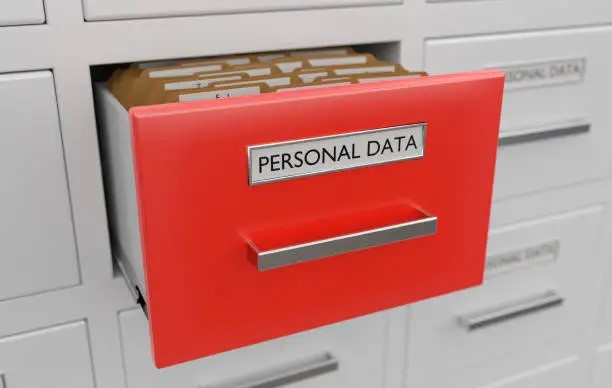Right now, somewhere in Munich, Manchester or Mumbai, someone closed the tab on your tourism website.
They didn’t leave a comment.
They didn’t send an angry email.
They just… left.
Fifteen seconds of scrolling, a frustrated click, and gone to book a safari in Kenya instead.
You’ll never know their name.
You’ll never see the abandoned cart.
There’s no notification that says “potential booking lost.”
But… it happened. Your website lost another booking.
And it’s probably happening again right now while you’re reading this.
Here’s the truth that nobody in tourism wants to admit:
Your website is costing you more bookings than your prices, your competition, or even those infrastructure headlines ever could.
And the worst part?
Most of these losses are completely preventable.
So, let me show you what’s really happening and how to stop the bleeding.
The invisible losses
Every tourism operator I talk to has the same frustration:
“We get traffic, but nobody books.”
They blame the economy, the negative press, the competition.
But when I look at their websites, I see something else.
I see the real reason people aren’t booking.
- The visitor from Germany who spent 10 minutes trying to figure out visa requirements, gave up. He went with a tour operator who made it simple.
- The family from the UK whose excitement died when your site took 45 seconds to load a single photo gallery on their hotel WiFi.
- The adventure seeker from Australia who loved your tours but couldn’t find any recent reviews or proof you’re still operating reliably.
- The luxury traveler from Dubai who was ready to spend big but bounced when your site offered no information about power reliability or water availability at lodges.
These are real people with real money who were ready to book until your website convinced them not to.
Yes, your website lost another booking.
The problem nobody’s talking about
Here’s what makes this particularly brutal for South African and Namibian tourism…
You’re not just competing on experience anymore.
You’re competing on confidence.
International travelers already have questions:
- They’ve seen the headlines about load shedding.
- They’ve read about water restrictions and road conditions.
- They’re wondering if their dream vacation might turn into a nightmare.
Your website is supposed to be the thing that reassures them. Instead, it’s often the thing that confirms their worst fears.
When they land on outdated pages, broken links, and vague information, they don’t think “oh, this website needs updating.”
They think “if they can’t even keep their website working, how will they manage my $5000 safari?“
Fair? No.
Reality? Absolutely.
What a content audit reveals
When you dig into a tourism website (really dig in) you find patterns. The same problems showing up again and again, quietly turning potential bookings into ghost visitors.
The information black holes:
These are the pages where information should be but isn’t.
- The visa page that says “contact us for details” instead of actually providing details.
- The FAQ section that hasn’t been updated since 2021.
- The safety information that’s so vague it creates more anxiety than it solves.
Every black hole is a decision point where someone gives up and leaves.
The speed traps:
That stunning hero image on your homepage?
It’s 8MB and takes 30 seconds to load on a mobile connection.
Your beautiful photo gallery?
It’s murdering your bounce rate because nobody’s waiting for it to render.
You optimized for beauty. Your visitors need speed.
Guess who wins that battle? (Hint: not you.)
The dead ends:
Someone lands on your “Things to Do in the Karoo” blog post from Google.
They’re engaged, they’re excited, they want to book.
But there’s no clear path from that article to your actual tours. No related trips. No “book this experience” button. Just… nothing.
They read, they enjoy, they leave. Never to return.
The trust gaps:
- Your certifications are buried in a footer nobody reads.
- Your last testimonial is from 2019.
- Your “About Us” page doesn’t mention how you’ve adapted to recent challenges.
- Your contact page has a form but no phone number for anxious international bookers who want to speak to a real human.
Each gap is a tiny voice in their head saying “are these people legitimate?”
The localization failures:
Your content assumes everyone is familiar with South African geography, customs, and conditions.
You’re not addressing the specific concerns:
- of German tourists (who care deeply about structure and planning)
- or Chinese travelers (who want group options and verified safety)
- or American visitors (who need everything in miles and dollars to even comprehend it).
One-size-fits-all content means you’re not really fitting anyone.
Why this audit matters more than you think (if your website loses bookings)
Let’s get practical.
A proper content audit isn’t about perfection. It’s about preventing losses.
When you systematically go through your website looking for problems, you find the exact spots where money is leaking out.
Then you patch them.
It’s that simple.
You’ll catch the technical stuff:
Broken links, 404 errors, images that won’t load, pages that search engines can’t properly index.
These are booking killers that take 10 minutes to fix once you know they exist.
You’ll spot the content gaps:
Missing information, outdated details, unclear instructions, pages that create questions instead of answering them.
These are the things making people email you instead of booking or worse, not even bothering to email.
You’ll identify the trust problems:
Stale testimonials, missing credentials, vague safety information, no signs of recent activity.
These are the subtle signals that make people choose your competitor instead.
You’ll discover the navigation failures:
Pages that lead nowhere, calls-to-action that are buried or missing, internal links that don’t exist, paths that dead-end instead of converting.
Most importantly, you’ll stop guessing about what to fix and start knowing.
Your game plan
Start this week:
- Pick your five most important pages. (Probably your homepage, main tour page, booking page, visa/entry info, and your most popular destination.)
- Go through each one as if you’re a first-time visitor who knows nothing about South Africa or Namibia.
- Write down every question you have that isn’t answered.
- Note every time you can’t find what you’re looking for.
- Mark every slow-loading element, every broken link, every outdated piece of information.
That’s your emergency fix list.
Your first wins (this week):
- Fix broken links and dead pages.
- Compress every image over 500KB.
- Update any information that’s more than a year old.
- Add clear “book now” or “inquire here” buttons to every tour page.
- Make your contact information visible on every page.
These are quick, easy fixes that will have immediate impact.
Deeper work (this month):
- Create a comprehensive FAQ that addresses the concerns international travelers actually have (not the questions you wish they’d ask).
- Update your visa/entry information to be detailed and current.
- Add fresh testimonials and reviews.
- Show evidence of recent tours and happy customers.
Address the infrastructure concerns head-on. Don’t hide from the reality. Show how you manage it.
Build for the long term:
- Set up a content calendar.
- Commit to reviewing your key pages every quarter.
- Create a process for keeping seasonal information current.
- Build a library of content that speaks to your different international markets.
Make website maintenance a priority, not an afterthought.
The reality check
You can keep doing what you’re doing, letting your website quietly lose you bookings while you focus on everything else.
Or…
You can spend a week doing an honest audit and fix the problems that are costing you money every single day.
The market is tough enough already. Infrastructure challenges are real. Competition is increasing. International travelers are cautious.
You can’t control all of that. But you absolutely can control whether your website is helping or hurting you.
The visitors are already coming to your site. Your job is to stop losing them.
That starts with knowing what’s not working and an audit shows you exactly that.
No more guessing.
No more assuming your website is “fine.”
No more losing bookings to preventable problems.
Just clear information about what’s wrong and a straightforward path to fix it.
Your next hundred bookings are already trying to find you. Make sure your website doesn’t send them somewhere else.
Ready to start?
- Open your website right now on your phone.
- Try to book one of your own tours.
- Write down every moment of friction, confusion, or frustration.
That’s where you begin.
Or even better…
I’ll check your website while you entertain your guests.
Email me: evdscopy@gmail.com









